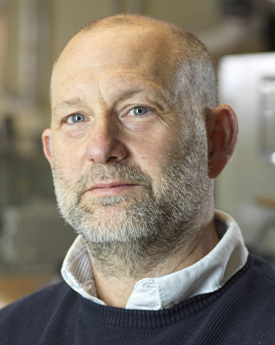Energy-harvesting powered wireless monitoring systems based on integrated smart composite structures and energy-aware architecture
The research is part of a more extensive £1 million project led by BAE Systems called En-come, that aims to develop an aircraft able to stay in the air for long periods.
The researchers will use sensors made from macro fibre composites adhered to the surface of aircraft wing panels to collect vibrations in the wings. Initial research will focus on analysing the structure of the aircraft using simulations of various structural forms and vibration spectrums. They will then be able to estimate the amount of energy that can be “harvested” by looking at the location, geometry of the sensor and the distribution of the energy.
Funded by the Engineering and Physical Sciences Research Council.
Multi-scale approaches to mechanical contraction and electrical wave conduction in a 3D model of human atria during fibrillation
The project is to tackle one of the grand challenges of integrative and systems biology that aims at predicting the behaviour of an organ under integrated actions of molecules, ions, cells and tissues operating at multi-physical scales.
The aim of this project is to tackle these challenges for the human atria (the upper chambers of the heart), malfunction of that cause morbidity and mortality. Specifically, we propose to:
- develop a new generation 3D anatomical model of the atria with coupled electrical dynamics and mechanical kinematics in its microstructure
- develop a new family of numerically stable and efficient algorithms based on finite element method (FEM) and particularly on discrete element methods (DEM), and compare their advantages and disadvantages in efficiency and stability
- using the newly developed 3D model of human atria to quantitatively predict the functional impact of some gene mutations, pharmacological interventions and ageing on atrial electrical and mechanic dynamics under normal and atrial fibrillation (AF) conditions
Funded by the Engineering and Physical Sciences Research Council.
Multiscale modelling of failure in fibre-reinforced composites
The aim of the research is to enhance understanding of fibre-reinforced composites failure through a damage simulation. The proposed technique is equally applicable to other engineering materials, including biological materials where cells are the basic units.
Fibre-reinforced composites are extremely susceptive to micro damage, resulting in complex failure of their constituents and interfaces. The complex multi-scale failure process develops simultaneously on all length scales. Current models all failed to capture this process, resulting in an overly conservative design. A new modelling strategy is followed here by taking materials as assemblies of elementary micro-scale particles with macroscopic continuum behaviour. The new model gives the most significant advantage over the traditional methodologies: challenging problems, such as inhomogeneity, singularities, moving boundaries and fragmentation, can all be dealt with due to the discontinuous representation of the microstructure of composite materials.
Funding is by QinetiQ and PhD projects.
Metamodel assisted design optimization of piezoelectric flex transducer for maximal kinetic energy conversion
Optimal designs are achieved using Sequential Quadratic Programming (SQP) on metamodels generated with Genetic Programming from optimal Latin hypercube design of experiments.
Energy Harvesting Devices (EHD) has been widely used to generate electrical power from, e.g. the bio-kinetic energy of human body movement. To further improve the efficiency of the device, optimal design of the PFT for maximum output power subjected to given constraints is investigated using Sequential Quadratic Programming (SQP) on metamodels generated with Genetic Programming from optimal Latin hypercube design of experiments.
Modelling and design of deep drafted paired columns Semisubmersible platform and oil/gas flow in the pipes in deep sea
The research aims at paired column semisubmersible platform design for rough weather conditions, considering recommended standards such as DNV and American Bureau of Shipping. The research will also investigate the design of risers using alternative materials.
Deep draft semisubmersibles hulls systems are mainly used for designing drilling and production units in the oil and gas industry and the recently developed paired column semisubmersible platform for dry tree use has been added to the fleet. The unique arrangement of columns of this hull formation creates flow circulation within the hull structure which in turn generates an uneven drag around the hull. These circulations coupled with the wave loading creates an unusual loading on the columns which result in additional deformations of the hull structure. Risers are conduits that are used for the transportation of fluid materials from the seafloor to production and drilling facilities on the water surface, as well as from these facilities to the seafloor. They are susceptible to pressure and motion in the sea as well as corrosion.
This project is partly funded by NDDC.








